An exercise is a url
To ask a question use ‘/ex/q/...’:
Press the right key for the next slide (or swipe left)
also ...
Press the left key to go backwards (or swipe right)
Press n to toggle whether notes are shown (no equivalent if you don't have a keyboard)
Press m or double tap to see a menu of slides
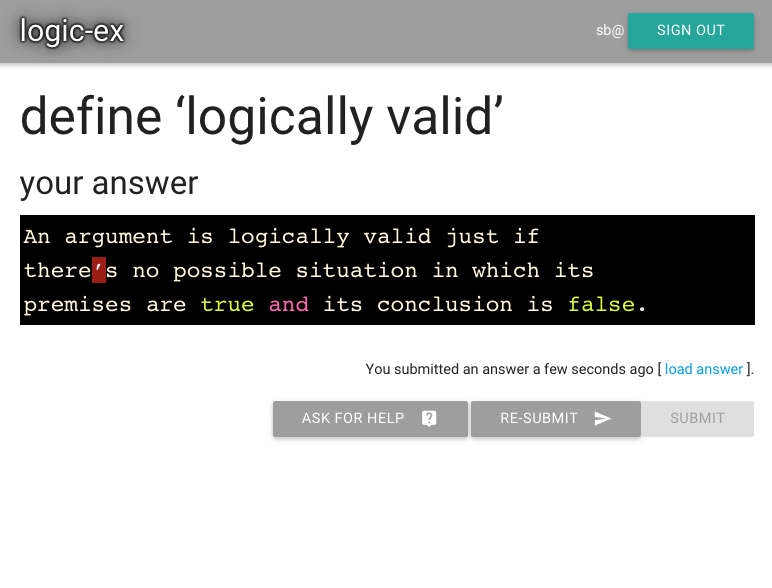
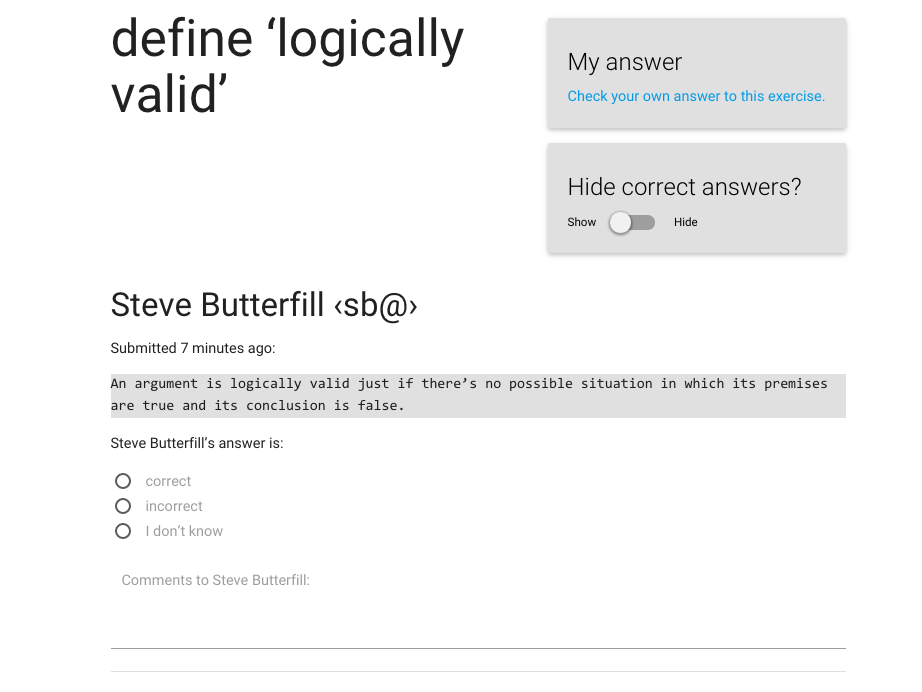
An exercise is a url
To ask a question use ‘/ex/q/...’:
To grade answers:
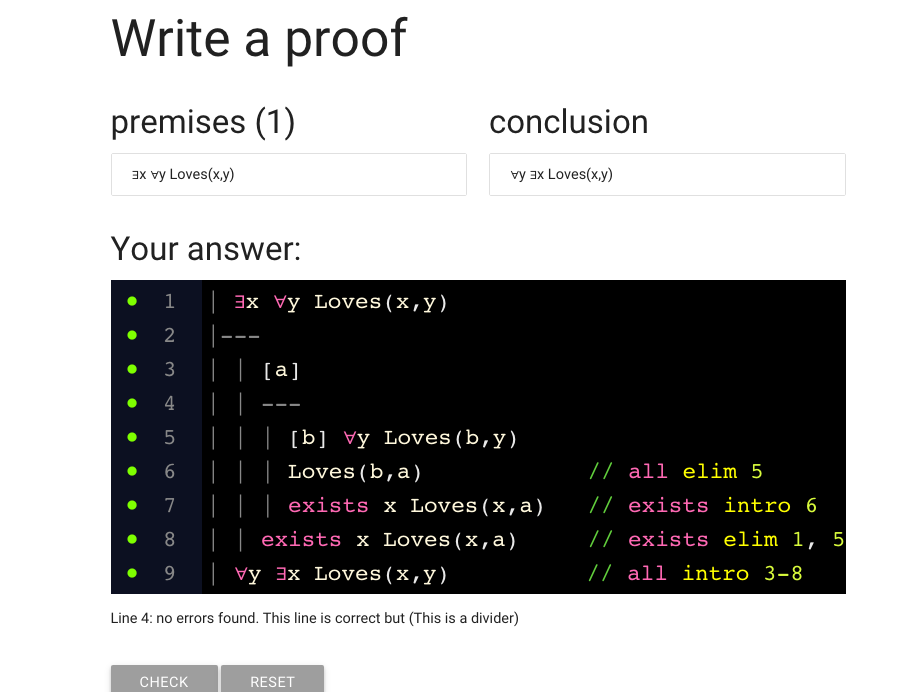
An exercise is a url
To set a proof use ‘/ex/proof/from/...|...|.../to/...’:
Separate multiple premises with |
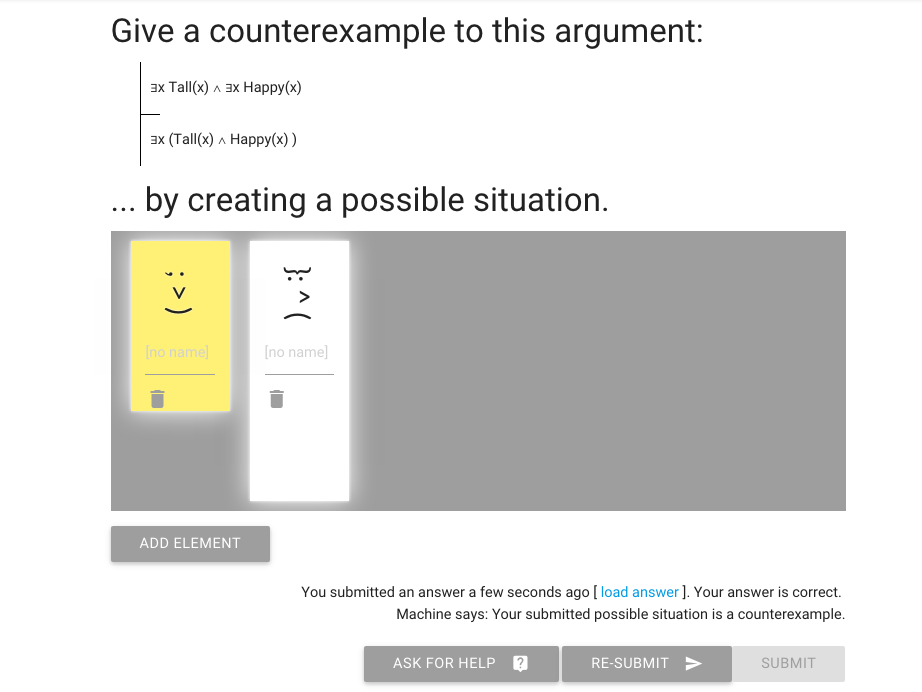
An exercise is a url
To require a counterexample use ‘/ex/create/from/.../to/...’:
variation
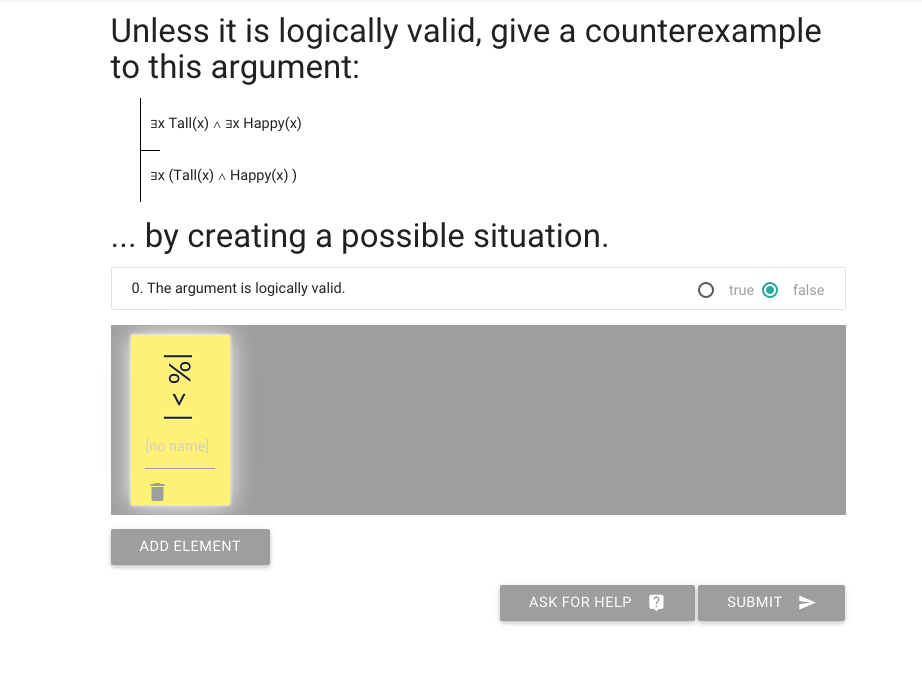
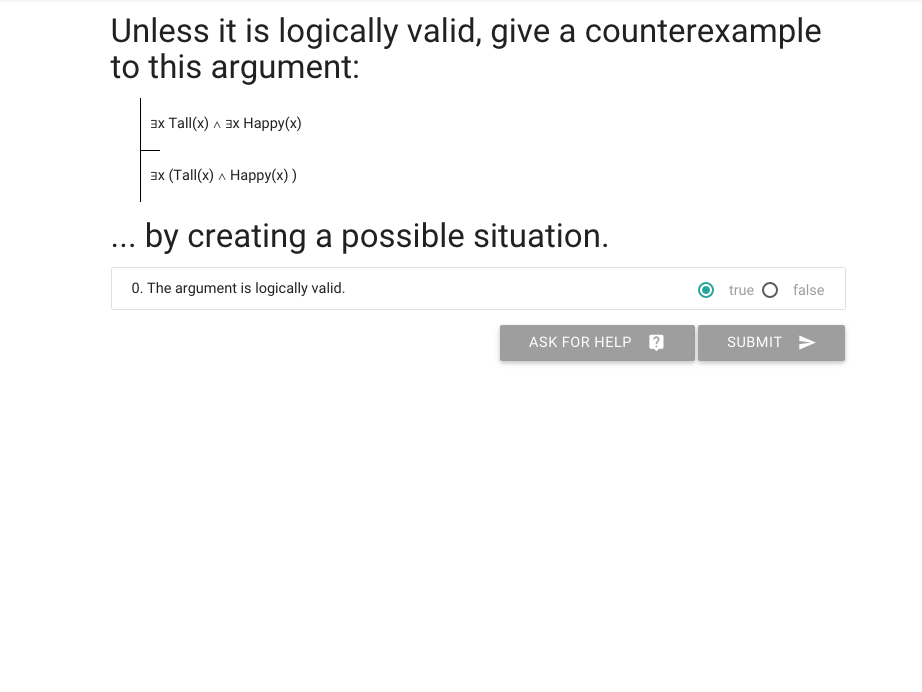

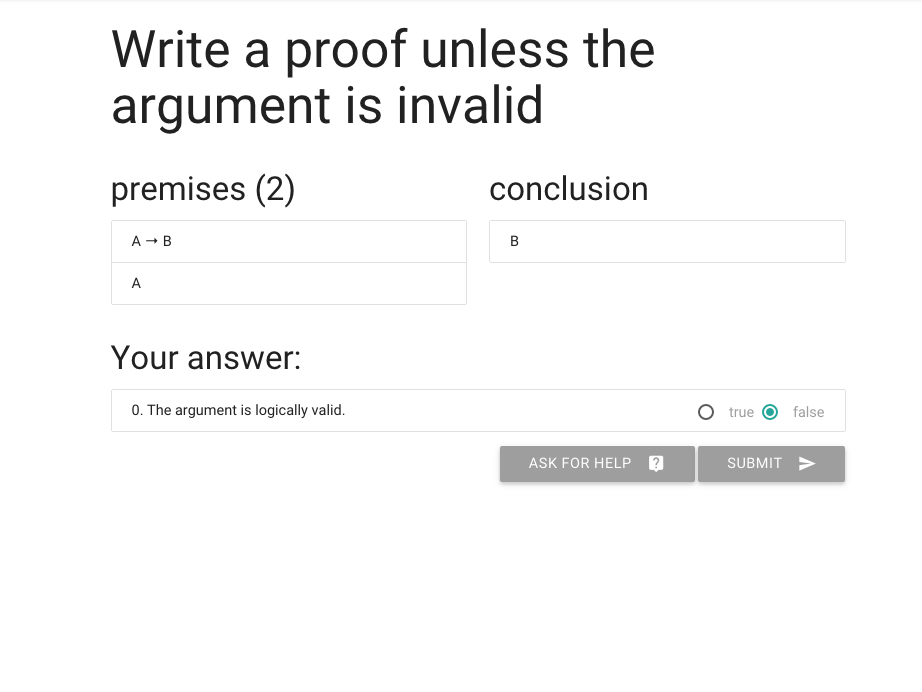
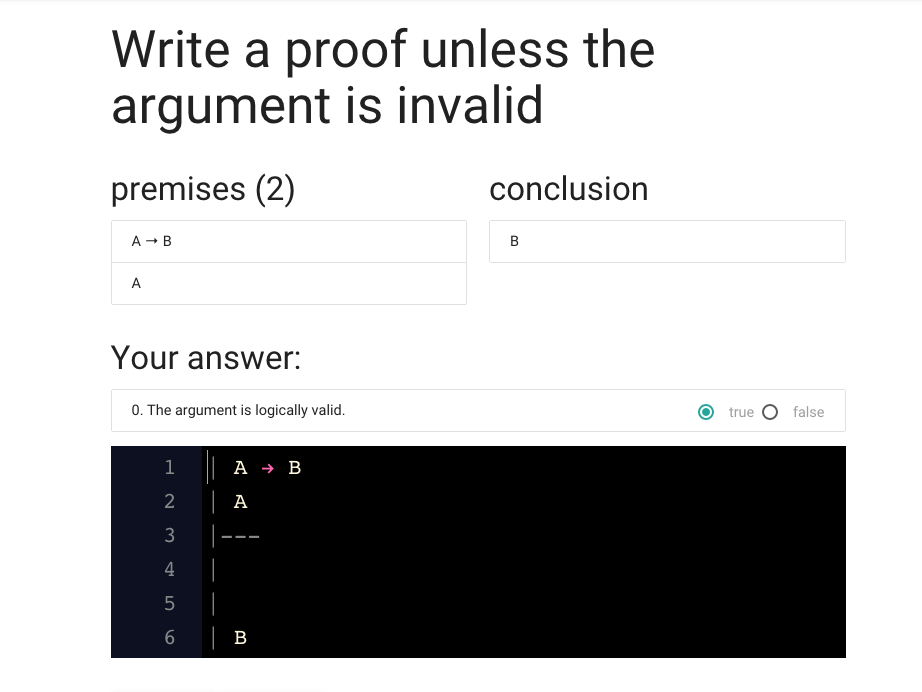
Avoid revealing whether an argument is valid.
Use ‘/ex/create/orValid/...’
make n sentences true
To require a possible situation in which one or more sentences are true
use ‘/ex/create/qq/...’
To avoid revealling whether the sentences are consistent
use ‘/ex/create/qq/orInconsistent/...’
truth tables
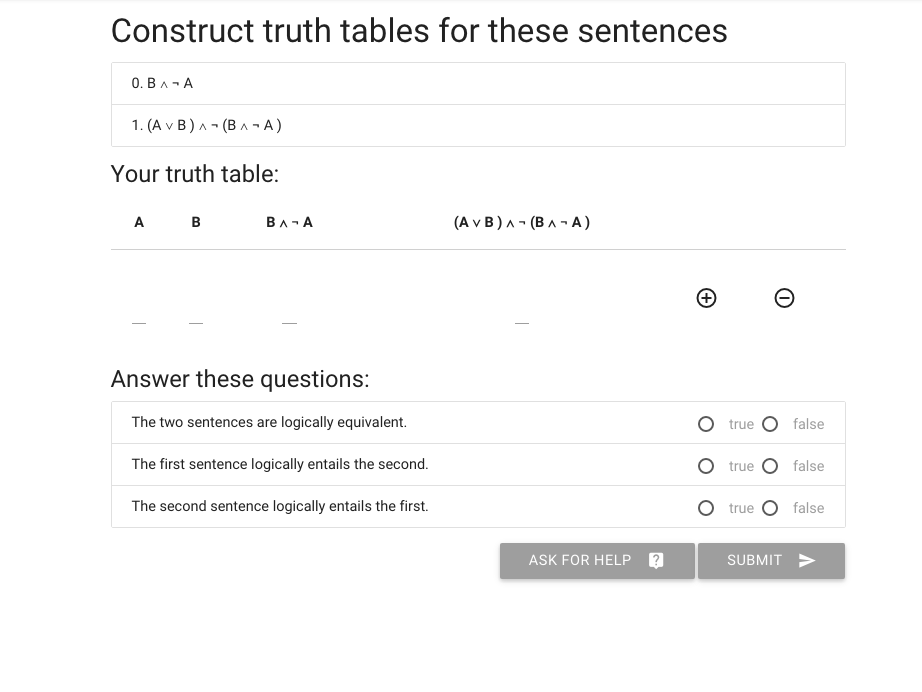
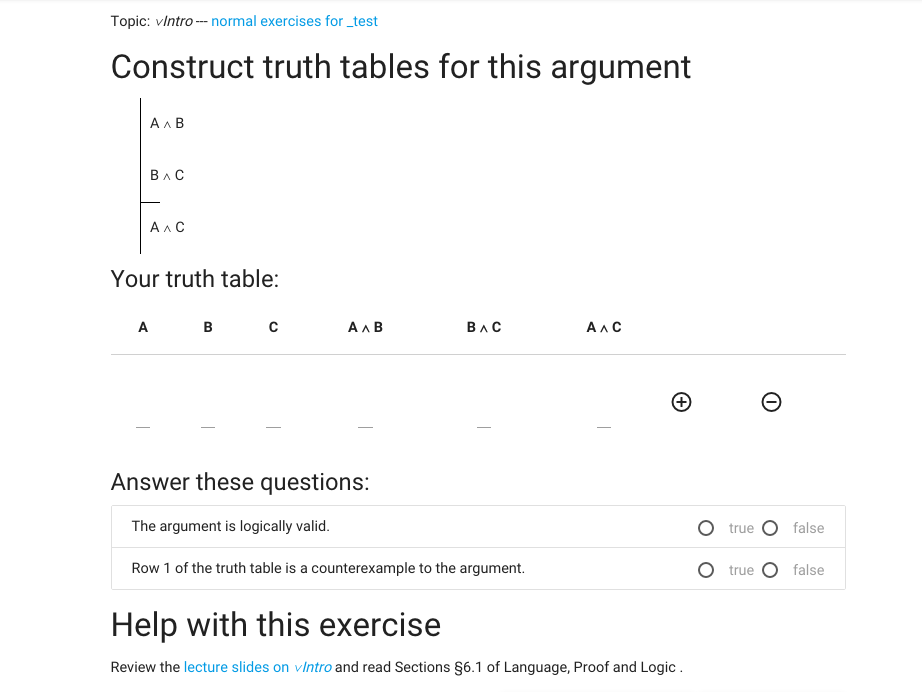
An exercise is a url
To require truthtables for sentences use ‘/ex/tt/qq/...’:
To ask for just the truth table (no questions)
use ‘/ex/tt/noQ/...’
To ask for truth tables for an argument
use ‘/ex/tt/from/.../to/...’
translation to and from awFOL
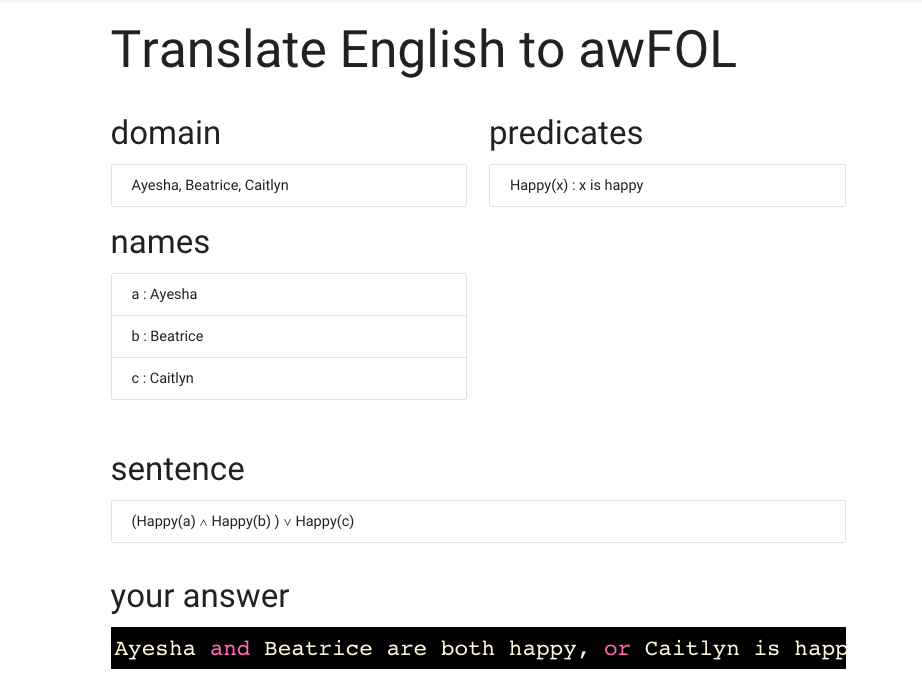
To require a translation
use ‘/ex/trans/domain/.../names/.../predicates/.../sentence/...’
/domain/Ayesha|Beatrice
OR: /domain/3things
/names/a=Ayesha|b=Beatrice|...
OR: /names/-/ [for no names]
/predicates/Happy1|LeftOf2|...
OR: /predicates/Happy1-x-is-happy|Musician1-x-is-a-musician|...
/sentence/exists x Happy(x)
OR: /sentence/Someone is happy
true or false questions
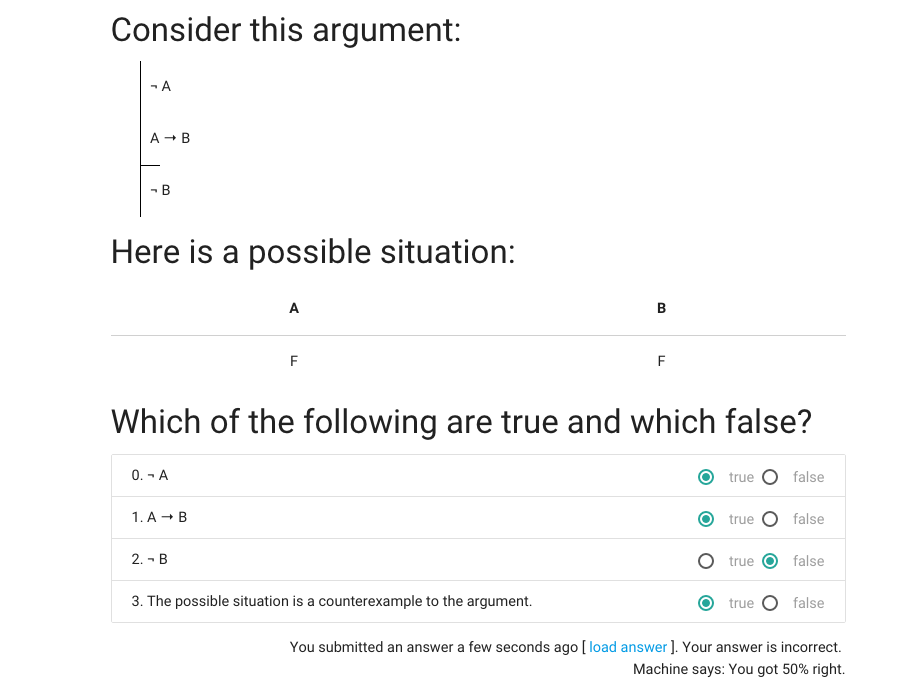
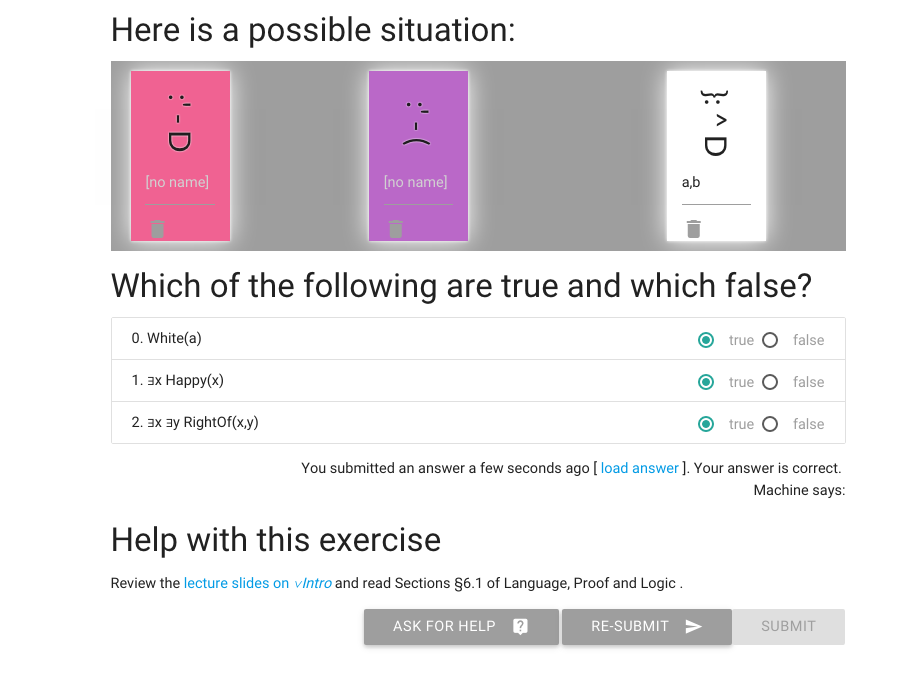
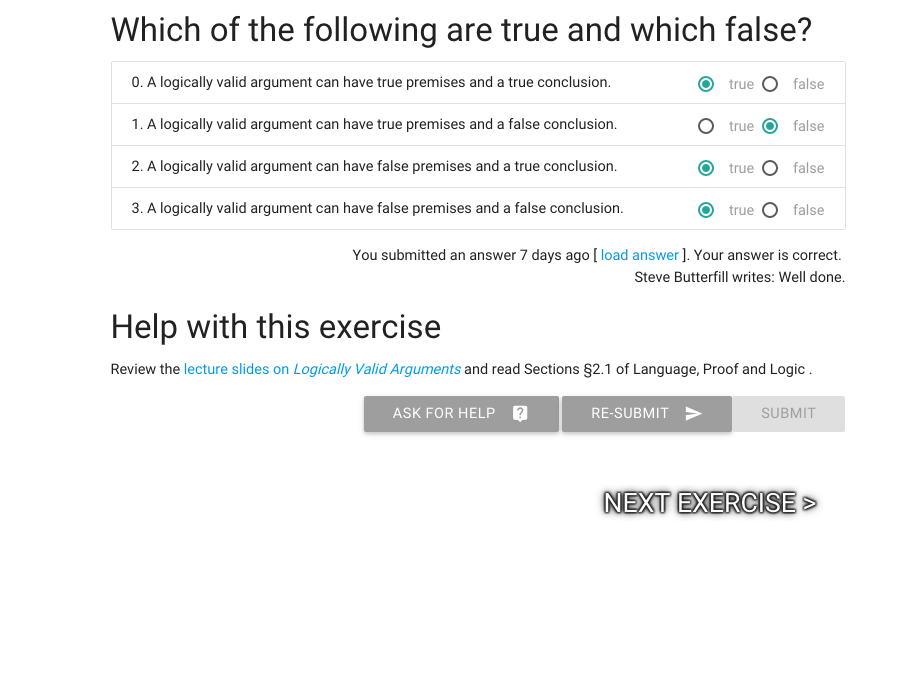
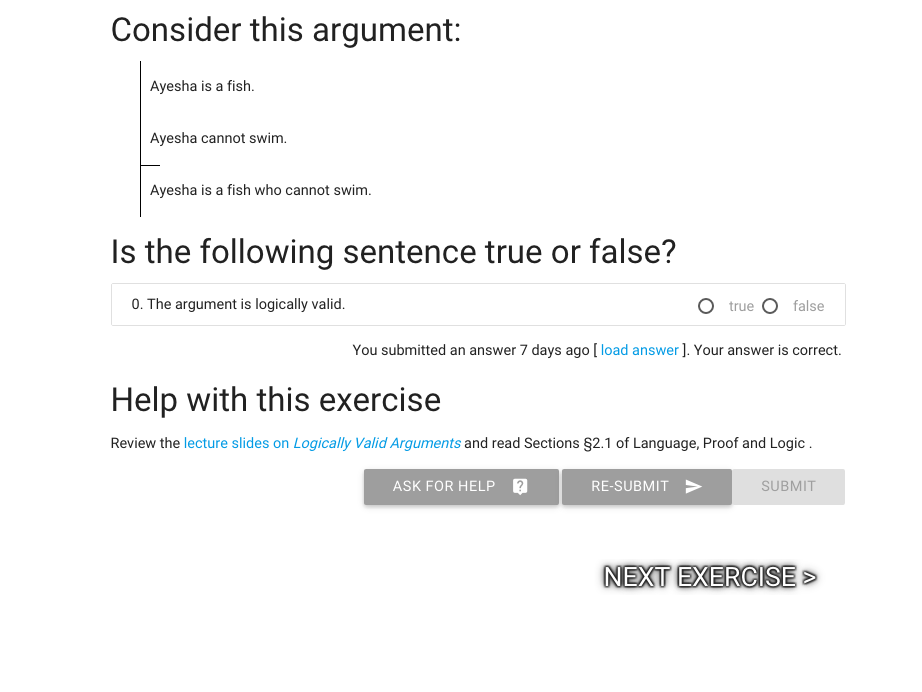
Set questions about combinations of arguments, truth table rows and pictorially represented possible situations.
e.g.
more examples
/course/UK_W20_PH126/exerciseSet/normal-normal
more types?